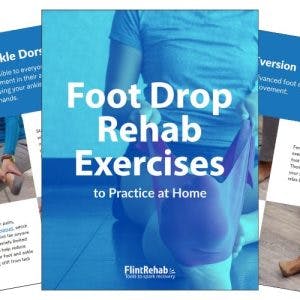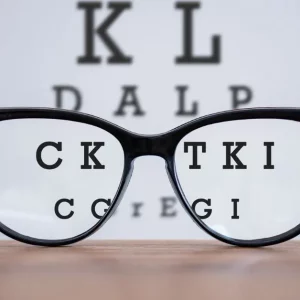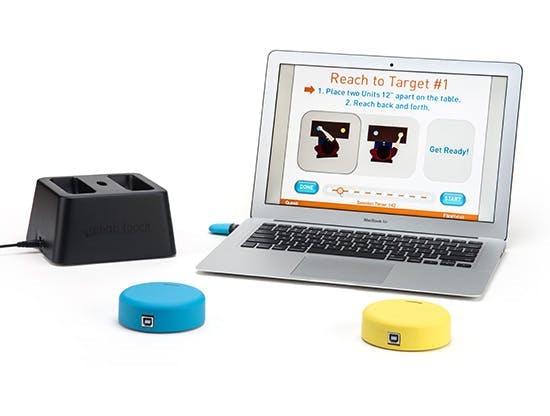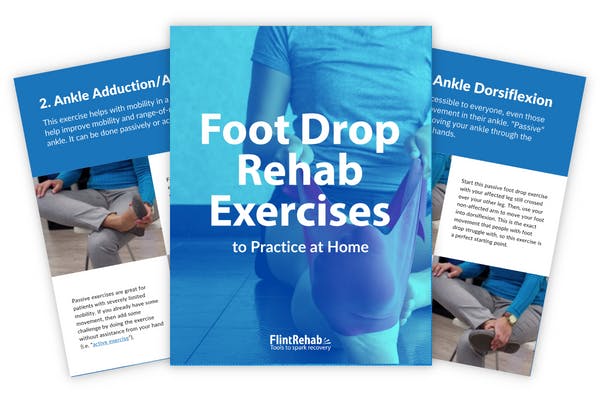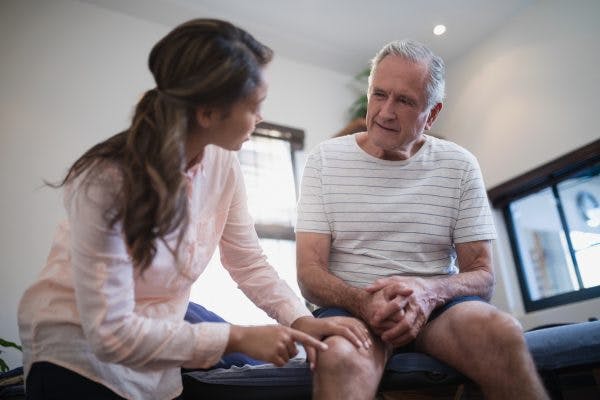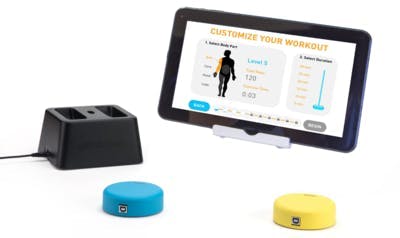If you are looking for some natural ways to recover from foot drop, we have some ideas for you to try. This article provides ways to cure foot drop naturally, avoiding medications or surgery.
These natural remedies for foot drop are effective because they depend on the brain’s natural ability to heal and rewire itself. Discover how to cure foot drop naturally by maximizing your brain’s potential to activate the right neurons in your leg to control your ankle better. But first, let’s get a clear understanding of what foot drop is.
Use the links below to jump straight to any section:
- Naturally Recovering Dorsiflexion
- Exercise as the Natural Cure
- What if You Can’t Exercise Your Foot?
- Do Foot Braces Count as Natural Remedies?
Naturally Curing Foot Drop to Recover Dorsiflexion
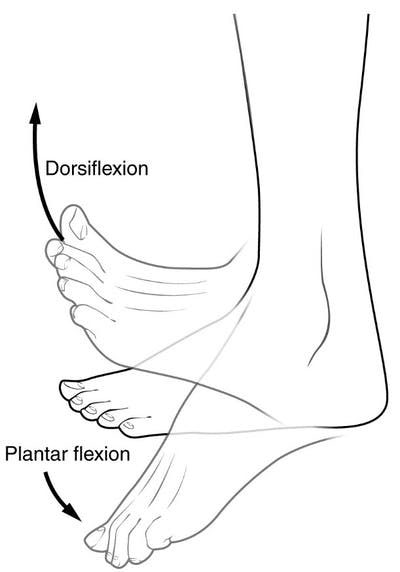
Image from Wikipedia
Foot drop occurs when you have difficulty lifting the top of your foot, a motion known as dorsiflexion. The muscles that cause dorsiflexion are the tibialis anterior, extensor halluces longus, and extensor digitorum longus.
When the brain loses the ability to send signals that tell these muscles to move (due to neurological injury like a stroke), it results in foot drop. Many individuals with foot drop use braces specifically for foot drop to keep their toes up and prevent tripping, but there’s actually a better way.
If foot drop is caused by injury to the brain, then the best natural remedy for foot drop involves healing and rewiring the brain through neuroplasticity. This is the brain’s natural ability to create and strengthen new neural pathways.
Neuroplasticity is how all skills are learned. It allows us to create and strengthen specific circuits in the brain as a result of experience (more on this soon). Neuroplasticity is fundamental for how to cure foot drop naturally.
Natural remedies to cure foot drop are particularly effective because they address the root issue: the brain-muscle connection. Drugs and surgery actually skirt around the cause of the problem and, as a result, do not achieve the best results.
In this case, homeopathic/natural remedies are the most effective method for foot drop recovery.
What are these remedies?
The Best Natural Cure for Foot Drop: Exercise!
Neuroplasticity refers to how the brain adapts to experience. For example, when a child first learns how to ride a bike, it’s the repeated experience of riding the bike that helps the child develop their skill.
Repetition encourages the brain to adapt and improve its capacity. Even after a stroke or brain injury, your brain can adapt and improve its function again. So let’s tie this back to natural foot drop recovery.
The best home remedy for foot drop is consistent rehab exercise. When you attempt to move your foot upward, the brain is stimulated to attempt to complete dorsiflexion. This repeated experience encourages the brain to rewire itself and improve control of your foot and ankle.
Repeated experience with foot exercise encourages the brain to get better at moving the affected foot. Therefore, consistent, regular exercise is an effective way to cure foot drop naturally.
What if You Can’t Exercise Your Foot?
If you are a stroke survivor with foot drop, you might have some residual movement in your foot, or you might have none at all.
Individuals that have residual movement can do active exercises where each exercise is performed on your own. If you have no movement, then you can start with passive exercises where you, or a helper, assist your affected foot through the movement.
To see how foot drop exercises can be done passively, see the Ankle Dorsiflexion movement demonstrated by Liliana, PT, DPT, from our foot drop exercise article:
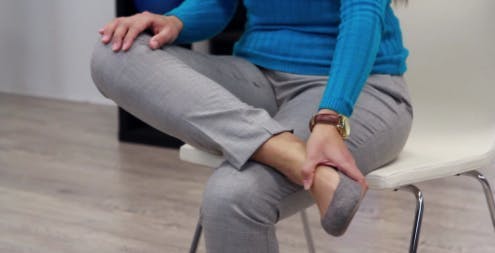
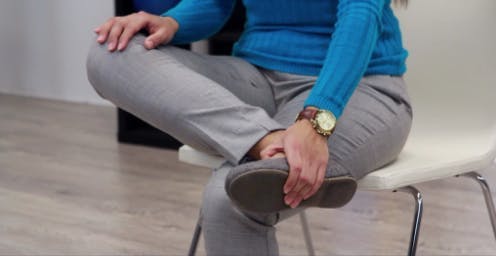
During this passive movement, your hand helps move the affected foot. Although you aren’t moving your foot independently, studies have shown that passive exercise helps activate neuroplasticity and rewire the brain.
With enough passive exercise, you might be able to regain enough movement in your foot to begin active exercise. This is why rehab exercise is the most effective natural remedy for foot drop.
Want 13 pages of foot drop exercises in a beautiful PDF? Click here to download our free Stroke Rehab Exercise ebook now (link opens a pop up for uninterrupted reading)
Do Foot Braces Count as Natural Remedies?
While rehabilitation exercise is the best foot drop treatment in homeopathy, you might need an afo brace for foot drop to ensure your safety as you move around.
A foot brace is also known as an ankle foot orthotic (AFO), which helps prop your foot up so that it doesn’t drag when you walk. If your therapists recommend one, be sure to listen to them. It’s important to avoid falls, which are a common cause of further injury and hospitalization.
However, AFOs should not replace your foot drop exercise, as they do not help rewire the brain. It’s best to wear a foot brace during your daily activities, but make time to take the brace off and practice therapeutic foot drop exercises. This helps address the root issue.
If you’ve read this far, it’s clear that you’re interested in homeopathic and natural remedies. A good source of motivation to continue pursuing this path is to avoid learned nonuse.
Learned nonuse occurs when affected muscles are neglected and, if the neglect is carried on long-term, the brain completely forgets about the affected muscles. As a result, all movement is lost, and recovery becomes that much harder.
Don’t let this scare you from using foot braces in general. Rather, use it as motivation to practice foot drop exercises on a regular basis to stimulate recovery.
Summary: How to Cure Foot Drop Naturally
Daily foot drop exercise is the best way to naturally recover from foot drop. It helps rewire the brain and improve control of dorsiflexion by drawing upon the brain’s natural ability to rewire itself.
Even if you cannot move your foot at all, passive exercise can still help spark changes in the brain. This is particularly helpful for people that have extremely limited mobility in the affected foot and leg.
In conjunction with exercise, foot drop braces can also help improve safety in the interim. While foot braces can lead to neglect of the affected foot, they are essential for preventing devastating falls.
Generally, it works best to use a combination approach. Use foot braces to carry out your daily activities, and be sure to schedule time to do your foot drop exercises with consistency. Best of luck on the homeopathic road to recovery.


